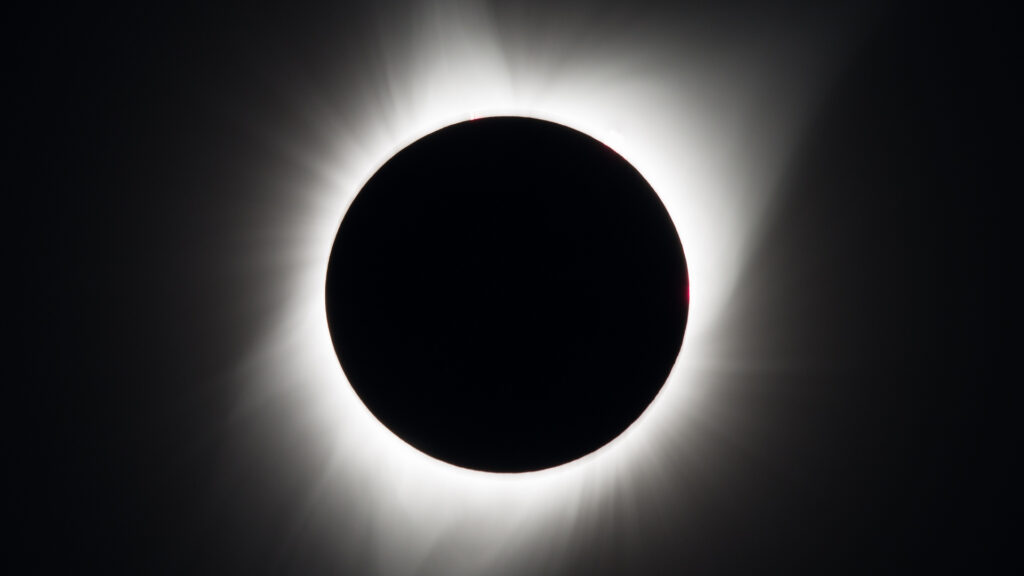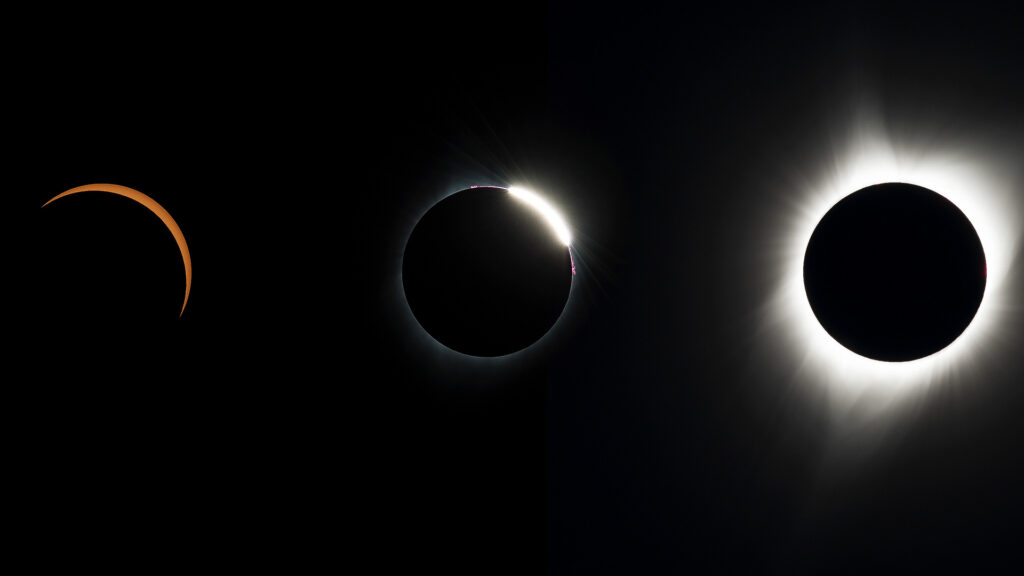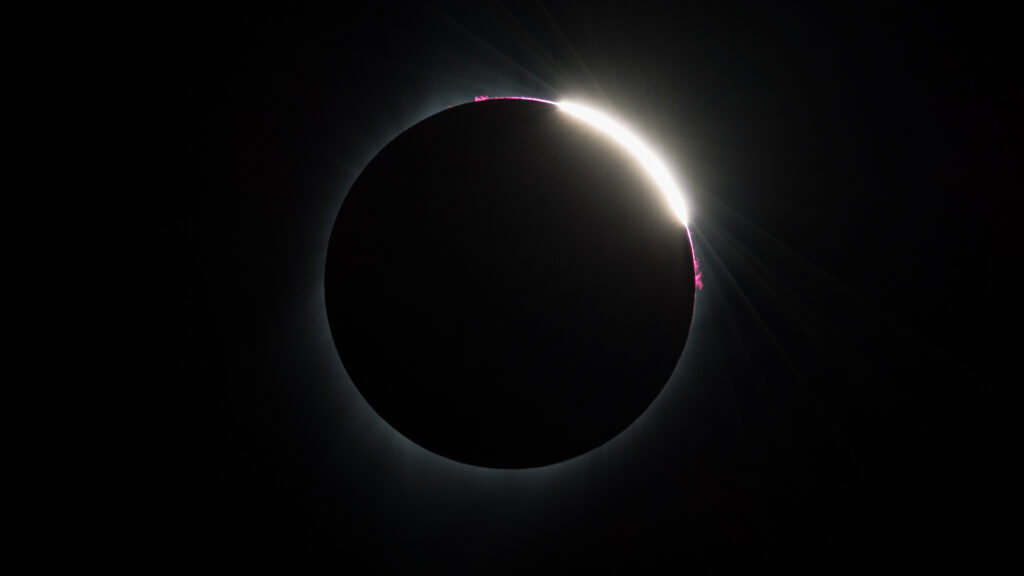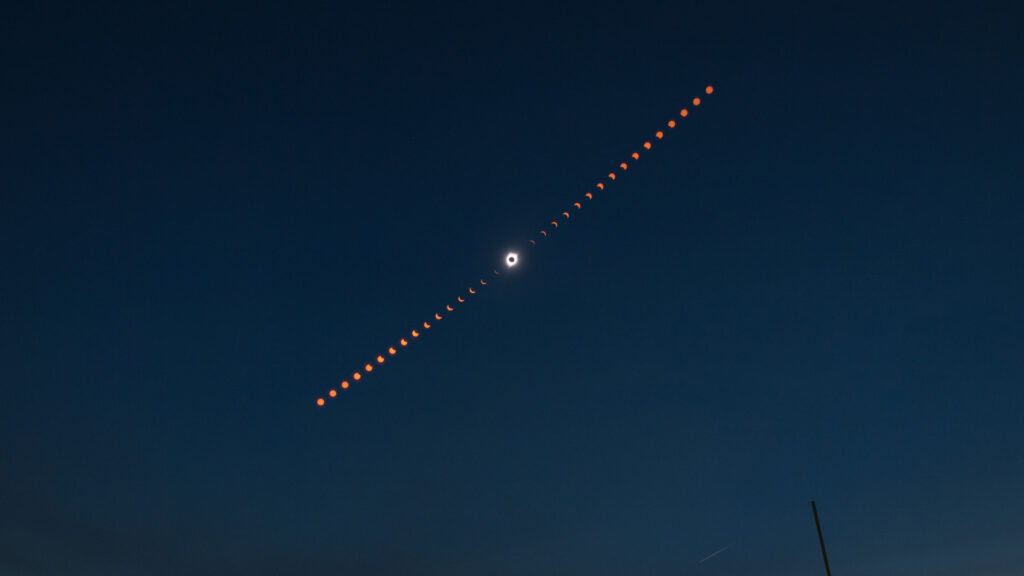Zinger Key Points
- The 2024 total solar eclipse will begin with Texas and end in Maine in the U.S.
- This rare celestial event will occur in totality over 13 states, giving viewers 3-5 minutes to observe it.
- Feel unsure about the market’s next move? Copy trade alerts from Matt Maley—a Wall Street veteran who consistently finds profits in volatile markets. Claim your 7-day free trial now.
A solar eclipse is going to sweep across the U.S. on Monday, and those within a 115-mile path will be able to experience a total solar eclipse.
If you want to catch this rare celestial event, though, don't be like former President Donald Trump and gaze at it directly. Instead, do what tech YouTuber MKBHD has suggested.
But before you get started, here's what you need to know about the total solar eclipse 2024.
Solar Eclipse 2024: When Does It Start?

The solar eclipse will start at 12:23 p.m. CDT, with Texas being the first state in the U.S. to experience it. The eclipse will begin as a partial one, and enter the totality phase at 1:40 p.m. CDT in Texas, according to NASA.
A total of 13 states will be able to experience the total solar eclipse.
Here's a list of states along with the time when the total eclipse is expected to begin and end. The totality will last between 3-5 minutes in each of these locations.
| Location | Totality Begins | Totality Ends |
| Dallas, Texas | 1:40 p.m. CDT | 1:44 p.m. CDT |
| Idabel, Oklahoma | 1:45 p.m. CDT | 1:49 p.m. CDT |
| Little Rock, Arkansas | 1:51 p.m. CDT | 1:54 p.m. CDT |
| Poplar Bluff, Missouri | 1:56 p.m. CDT | 2:00 p.m. CDT |
| Paducah, Kentucky | 2:00 p.m. CDT | 2:02 p.m. CDT |
| Carbondale, Illinois | 1:59 p.m. CDT | 2:03 p.m. CDT |
| Evansville, Indiana | 2:02 p.m. CDT | 2:05 p.m. CDT |
| Cleveland, Ohio | 3:13 p.m. EDT | 3:17 p.m. EDT |
| Erie, Pennsylvania | 3:16 p.m. EDT | 3:20 p.m. EDT |
| Buffalo, New York | 3:18 p.m. EDT | 3:22 p.m. EDT |
| Burlington, Vermont | 3:26 p.m. EDT | 3:29 p.m. EDT |
| Lancaster, New Hampshire | 3:27 p.m. EDT | 3:30 p.m. EDT |
| Caribou, Maine | 3:32 p.m. EDT | 3:34 p.m. EDT |
When Was The Last Total Solar Eclipse?

The last total solar eclipse was on Aug. 21, 2017, with viewers experiencing the "ring of fire" after the moon slid in front of the sun, creating a halo effect.
Partial solar eclipses are more common, though. The most recent occurrence was on Oct. 14, 2023.
When Will The Next Total Solar Eclipse Take Place?

The next total solar eclipse is expected to take place on Aug. 23, 2044 – more than 20 years from now.
This makes Monday's total solar eclipse a very rare celestial event, so you must get ready in the best way possible.
Subscribe to the Benzinga Tech Trends newsletter to get all the latest tech developments delivered to your inbox.
Don't Do It Like Trump
But before you go ahead, it's important to understand the dos and don'ts of watching a total solar eclipse.
For starters, don't do it like former President Donald Trump, who went ahead and viewed the 2017 solar eclipse by gazing at the sun with naked eyes.
On the afternoon of Aug. 21, 2017, President Trump was joined by then-first lady Melania Trump and their son Barron to watch the solar eclipse from the White House balcony.
Trump was photographed gazing at the sun without any sort of eye protection.
This is harmful and can lead to eye damage.
Do What MKBHD Says Instead

Instead, you can do what popular tech YouTuber Marques Brownlee suggests – use your smartphone!
"Just pointed my phone camera directly at the midday sun for 5 minutes straight. It got a little warm, but… no damage. I’m gonna go ahead and say point your phones at the eclipse tomorrow, it’ll be fine."
Total solar eclipses are safe to watch with the naked eye during the totality. The totality timelines are mentioned above, but they only last between 3-5 minutes.
Watching partial eclipses directly can be dangerous, since they contain harmful ultraviolet (UV) and infrared (IR) rays which can damage your retina, or worse, cause blindness.
Other Safe Ways To Watch A Solar Eclipse

Other safe ways to watch a solar eclipse are using solar filters or solar eclipse glasses. If you have a telescope or a pair of binoculars, there are solar filters designed for them, too.
Here's what the American Astronomical Society (AAS) recommends when it comes to using solar eclipse glasses and filters:
- Check solar filter or glass for damage or scratches before use. If you observe these issues, discard them and grab a new pair.
- If you use prescription glasses, make sure to place the solar filter or glasses above them.
- Wear the solar filters or glasses while looking away from the sun. When secure, you can look at the sun.
- Look away from the sun before you remove the solar filters or glasses.
If you are using a telescope or binoculars, make sure to place the solar filter towards the end facing the sun.
Always make sure you place the large end of the telescope towards the sun.
Alternatively, you can view the 2024 total solar eclipse via NASA, too.
Check out more of Benzinga's Consumer Tech coverage by following this link.
Read Next: This Hidden iOS 17 Feature Gives Your iPhone A 2X Speed Boost
© 2025 Benzinga.com. Benzinga does not provide investment advice. All rights reserved.
Trade confidently with insights and alerts from analyst ratings, free reports and breaking news that affects the stocks you care about.